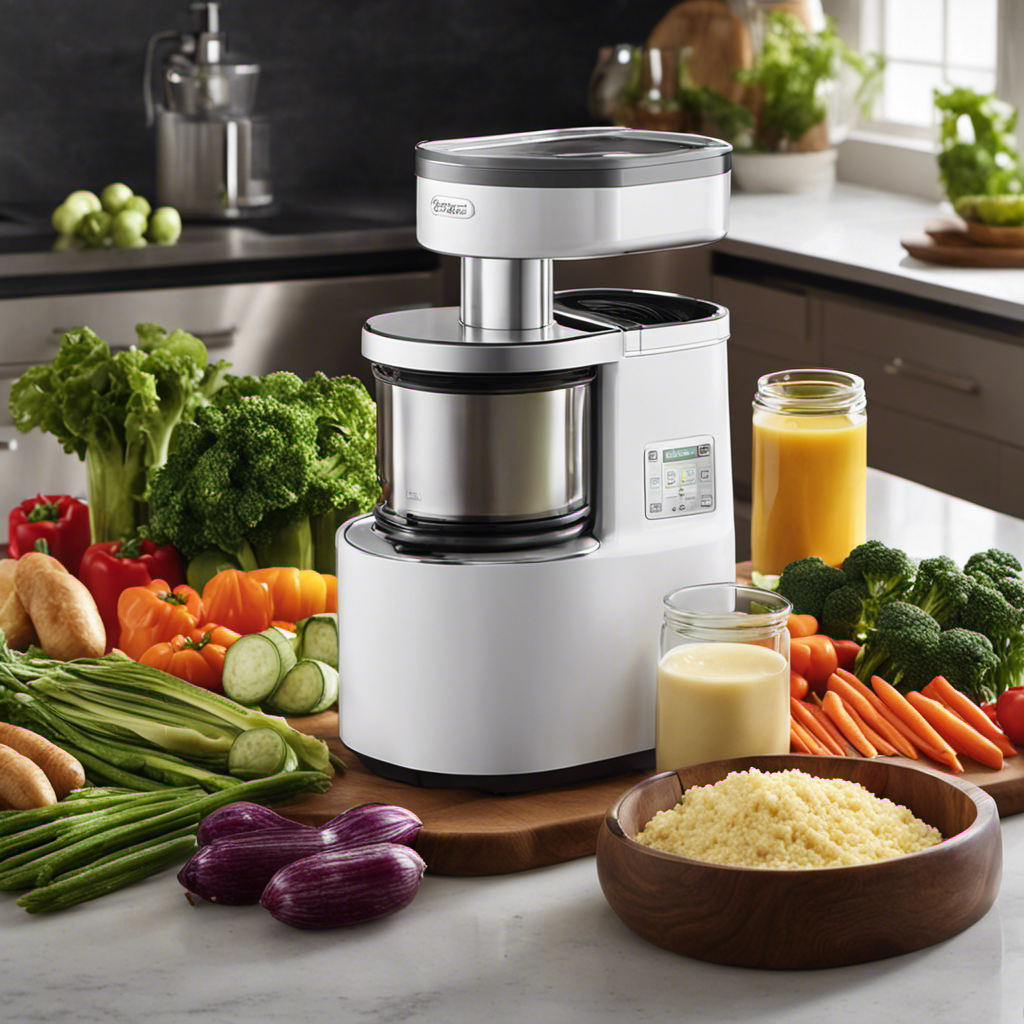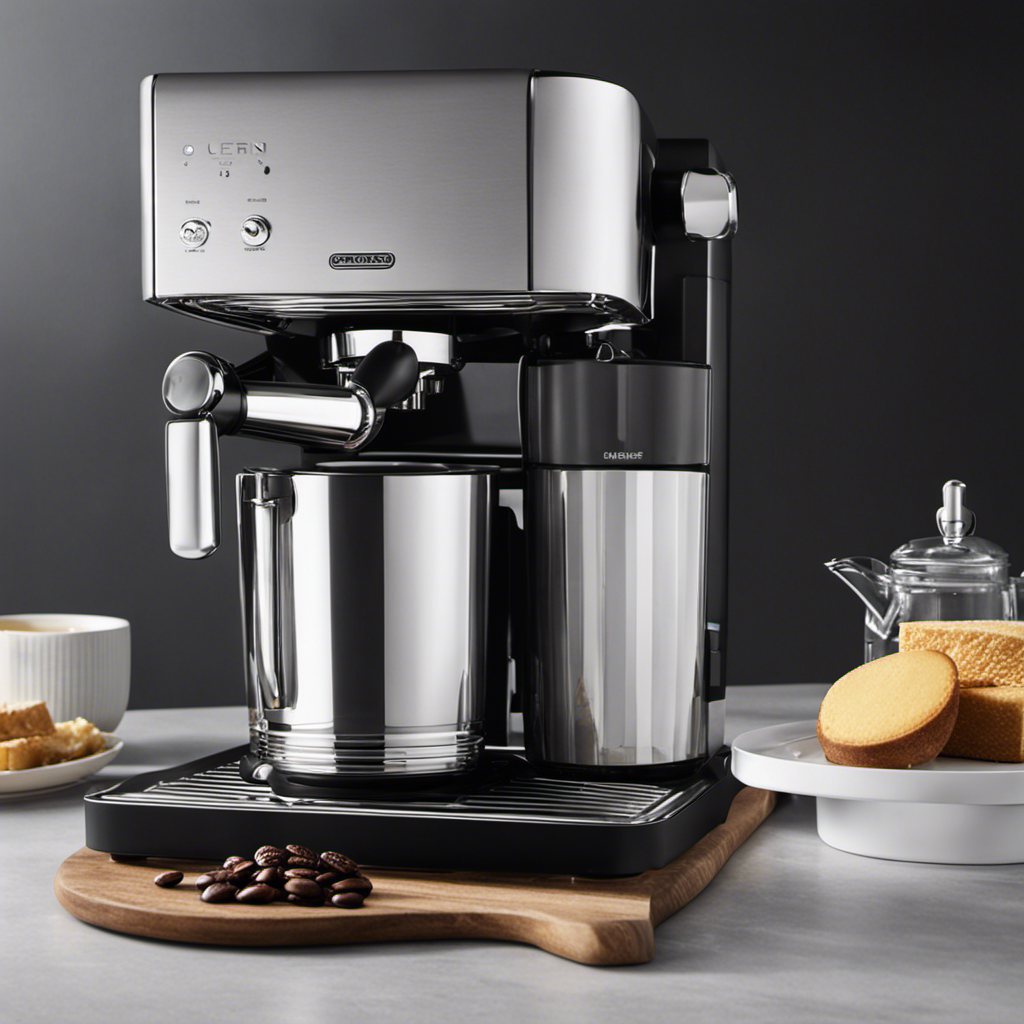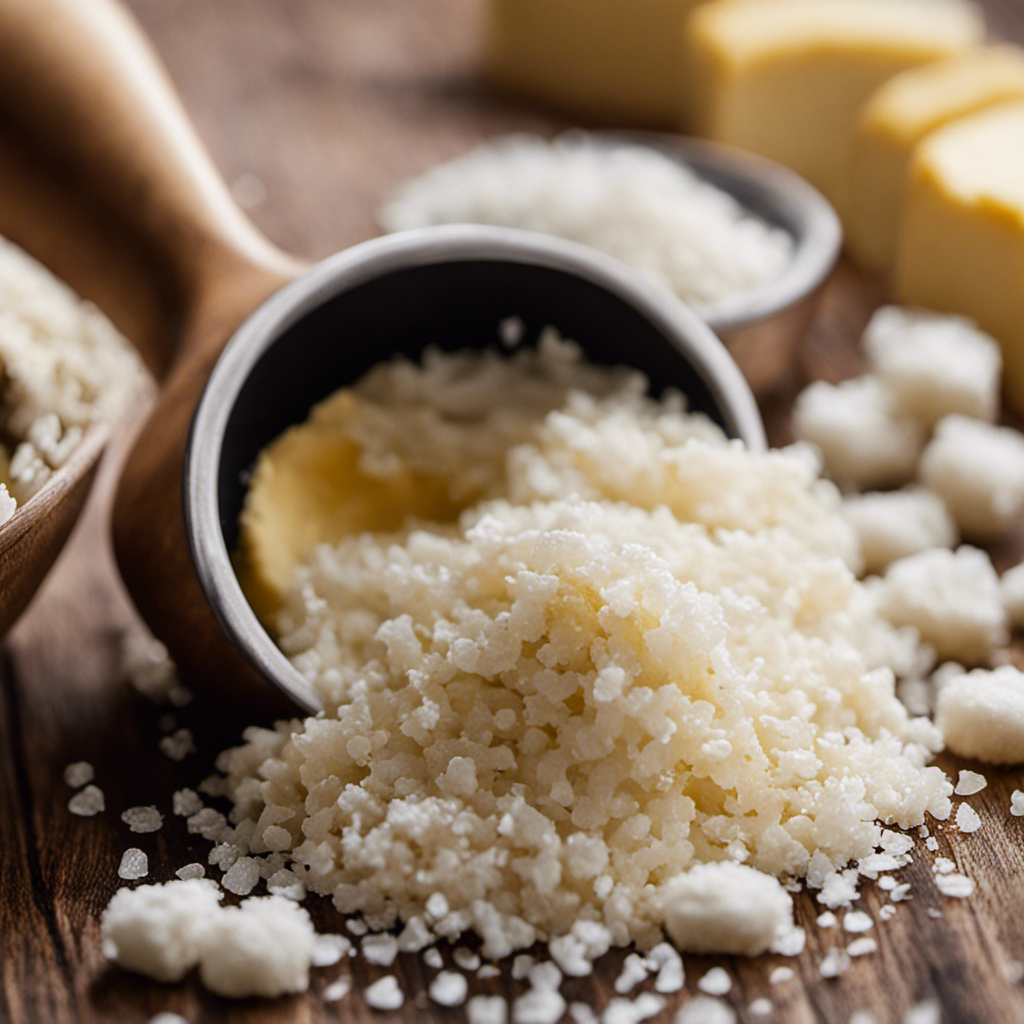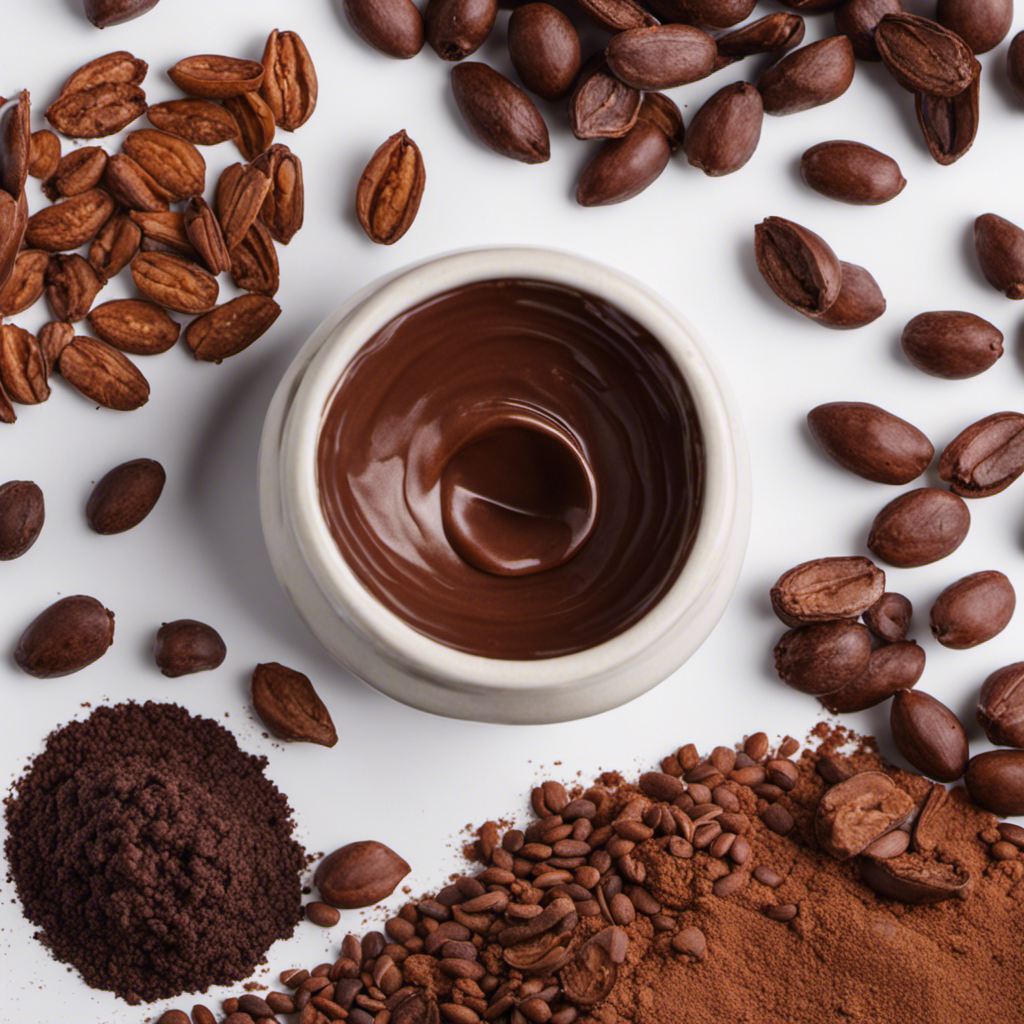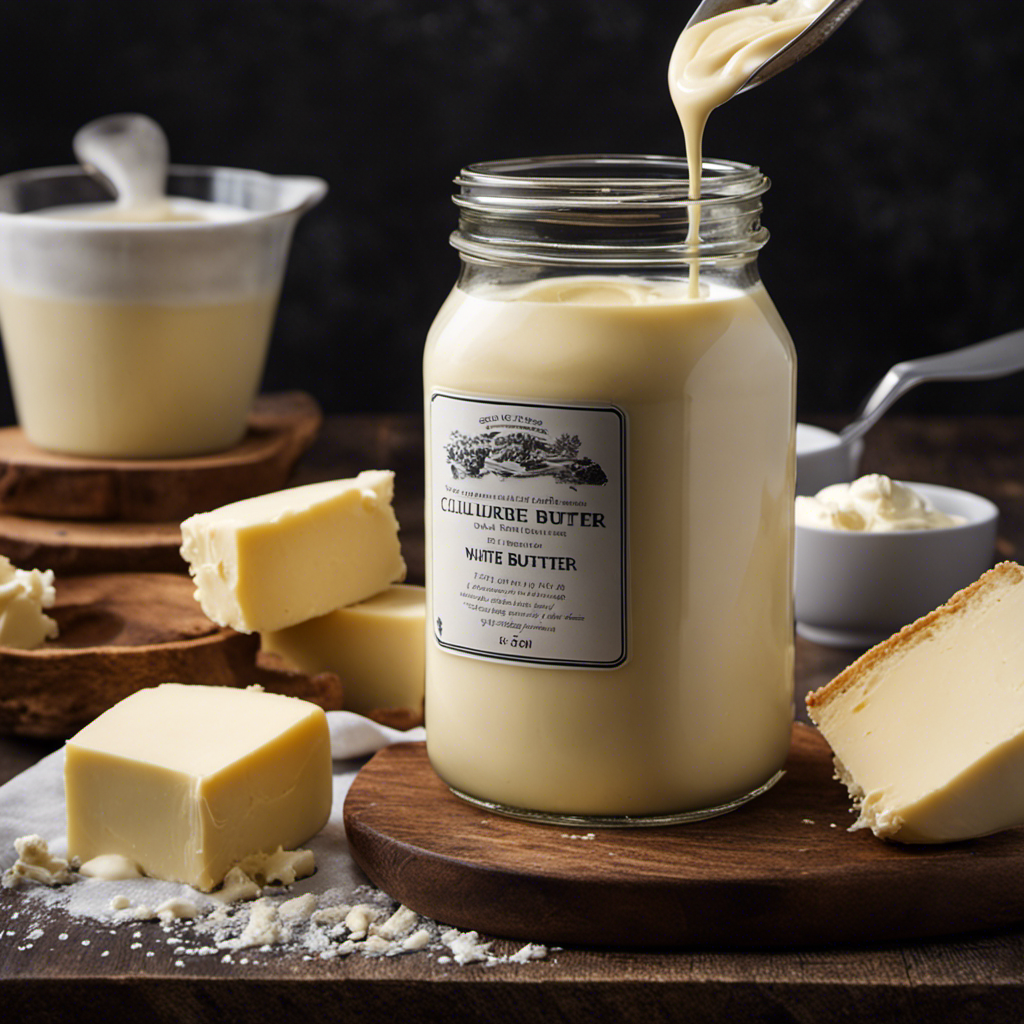Butter Tips and Tricks
Which Butter Is Good for Kidney Disease: A Comprehensive Guide
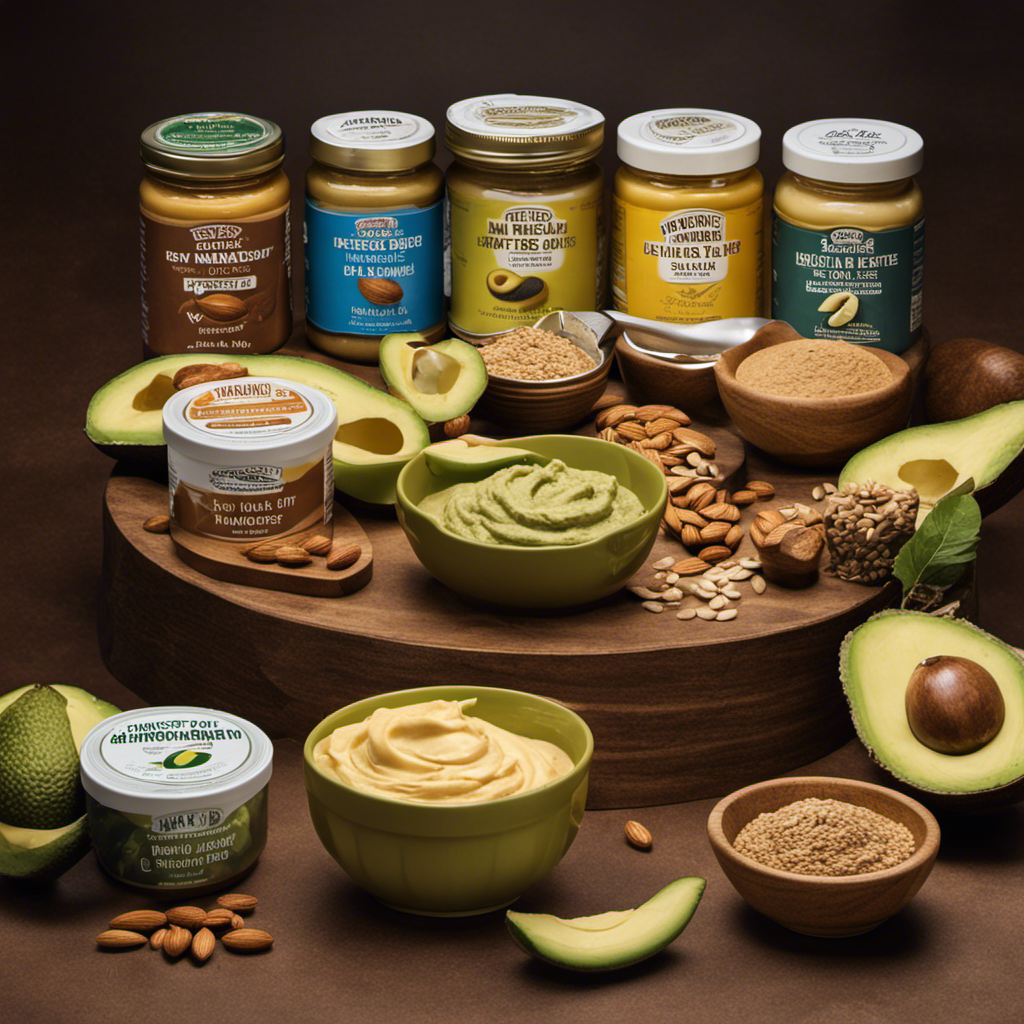
Are you dealing with kidney disease and curious about which butter is suitable for you to consume? Search no more!
In this article, we will delve into the world of butter and explore which options are best suited for individuals with kidney disease. By evaluating nutritional content, sodium levels, and exploring alternative options, we will provide you with the knowledge you need to make informed choices about your butter consumption.
Say goodbye to uncertainty and hello to delicious, kidney-friendly butter!
Key Takeaways
- Following a specific meal plan is important for managing kidney disease, including dietary restrictions on sodium, potassium, and phosphorus intake.
- Salted butter should be avoided due to its higher sodium content, while unsalted butter is a kidney-friendly option with little to no sodium.
- Alternatives to butter, such as olive oil, avocado, and nut butters, can provide a tasty and healthier option for individuals with kidney disease.
- Choosing low sodium butter options and incorporating butter alternatives can support kidney health, maintain healthy blood pressure levels, and reduce the risk of fluid retention.
Understanding Kidney Disease and Dietary Restrictions
If you have kidney disease, it’s important to understand the dietary restrictions that come with it. Kidney disease management involves following a specific meal plan to help maintain kidney function and prevent further damage. One of the key aspects of this plan is adhering to dietary restrictions.
These restrictions typically involve limiting the intake of certain nutrients such as sodium, potassium, and phosphorus. Sodium can be found in processed foods, so it’s important to avoid those. Potassium is found in many fruits and vegetables, so it’s necessary to limit the consumption of those as well. Phosphorus is found in dairy products, so it’s crucial to choose low-phosphorus alternatives.
Following these dietary restrictions, along with proper meal planning, can help support kidney health and overall well-being.
Now, let’s move on to evaluating different types of butter for kidney disease.
Evaluating Different Types of Butter for Kidney Disease
When it comes to evaluating different types of butter for kidney disease, it’s important to consider the sodium content. Salted butter tends to have a higher sodium content due to the added salt, which can be problematic for individuals with kidney disease who need to limit their sodium intake.
On the other hand, unsalted butter is a kidney-friendly option as it contains little to no sodium, making it a better choice for those with kidney disease.
If you’re looking for alternatives to butter altogether, there are a variety of options available such as olive oil, avocado, or nut butters that can provide a tasty and healthier alternative.
Salted Butter’s Sodium Content
Salted butter has a higher sodium content compared to unsalted butter. This is because salt is added to enhance the flavor and preserve the butter.
When it comes to kidney health, it is important to consider the sodium content in your diet. Excessive sodium intake can lead to fluid retention and increased blood pressure, which can put strain on the kidneys.
To maintain a healthy kidney function, it is recommended to opt for low sodium butter options. These options provide a flavorful alternative while reducing your sodium intake.
Incorporating low sodium butter into your diet can have a positive impact on kidney health by helping to maintain healthy blood pressure levels and reducing the risk of fluid retention.
Unsalted Butter Kidney-Friendly
To make a kidney-friendly choice, you can opt for unsalted butter as it has a lower sodium content. When managing kidney disease, it is important to limit your sodium intake, as high sodium levels can increase blood pressure and strain the kidneys. Unsaturated fats found in unsalted butter can be a good alternative to salted butter, as they are heart-healthy and can help lower cholesterol levels. Here is a comparison of the nutritional content of unsalted butter and salted butter:
| Nutritional Content | Unsalted Butter | Salted Butter |
|---|---|---|
| Sodium (mg) | 0 | 82 |
| Total Fat (g) | 11 | 11 |
| Saturated Fat (g) | 7 | 7 |
| Cholesterol (mg) | 30 | 30 |
Alternatives to Butter?
If you’re looking for alternatives, you can try using olive oil or avocado as a healthier option. These butter substitutes provide a delicious flavor and are low in sodium, making them suitable for individuals who are looking to reduce their sodium intake.
Here are some options to consider:
-
Olive oil: This heart-healthy oil is rich in monounsaturated fats and has been shown to have numerous health benefits. It can be used for cooking, baking, or as a topping for bread or vegetables.
-
Avocado: Avocado is a creamy and nutritious fruit that can be mashed and spread on toast or used as a substitute for butter in baking. It is high in healthy fats and contains beneficial nutrients like potassium and fiber.
-
Low sodium spreads: There are various low sodium spreads available in the market that are specifically designed as butter alternatives. These spreads are often made from plant-based oils and are lower in saturated fat and sodium compared to traditional butter.
Analyzing Nutritional Content of Butter Varieties
When it comes to the nutritional benefits of butter variations and their impact on kidney health, there are a few key points to consider.
Firstly, different types of butter can vary in their nutrient profile, with some varieties containing higher levels of vitamins and minerals than others.
Secondly, it is important to take into account the overall dietary needs of individuals with kidney disease, as excessive intake of certain nutrients, such as sodium and phosphorus, can negatively affect kidney function.
Lastly, consulting with a healthcare professional or registered dietitian can provide valuable guidance on incorporating butter variations into a kidney-friendly diet while maximizing the nutritional benefits.
Nutritional Benefits of Butter Variations
Butter variations offer different nutritional benefits for individuals with kidney disease. When choosing a butter for your diet, it’s important to consider its nutritional value and cholesterol content. Here are three factors to keep in mind:
-
Omega-3 Fatty Acids: Some butter variations, such as grass-fed butter, contain higher levels of omega-3 fatty acids. These healthy fats have been shown to reduce inflammation and support heart health.
-
Vitamin A: Butter made from pastured cows is a good source of vitamin A, which is essential for maintaining healthy vision and supporting the immune system. Vitamin A also plays a role in kidney health.
-
Low Cholesterol Options: If you’re concerned about cholesterol, look for butter substitutes made from vegetable oils or nut butters. These alternatives can provide a creamy texture without the high cholesterol content.
Impact on Kidney Health
Now that you know about the nutritional benefits of different types of butter, it’s important to understand how they can impact your renal function if you have kidney disease.
When it comes to kidney health, dietary considerations play a crucial role. Butter, like other high-fat foods, can potentially have a negative impact on your kidneys. Diets high in saturated fat have been linked to an increased risk of kidney disease and may further impair renal function in those who already have the condition.
Therefore, it is advisable to consume butter in moderation and choose low-fat or unsalted options whenever possible. By making these dietary adjustments, you can help support your kidney health and overall well-being.
Now, let’s move on to identifying low-sodium butter options that can be beneficial for individuals with kidney disease.
Identifying Low-Sodium Butter Options
If you want to find low-sodium butter options, you should look for brands that specifically state ‘low-sodium’ on the packaging. These brands have been formulated to contain less sodium, making them suitable for individuals who need to limit their sodium intake.
Here are three key things to consider when identifying low-sodium butter options:
-
Look for the ‘low-sodium’ label: This ensures that the butter has been specifically made with reduced sodium content.
-
Check the nutrition label: Look for the sodium content per serving size. Aim for butter options that have less than 140 milligrams of sodium per serving.
-
Explore butter substitutes: If you’re unable to find low-sodium butter options, consider using butter substitutes like olive oil, avocado, or nut butters, which can provide a similar taste without the added sodium.
By being aware of these options, you can make informed choices about the butter you consume while managing your sodium intake.
Now let’s explore some butter alternatives for kidney disease patients.
Exploring Butter Alternatives for Kidney Disease Patients
When managing your sodium intake, you can consider exploring alternative options that are suitable for individuals with kidney conditions. Butter substitutes can be a great choice for those who need to reduce their sodium intake while still enjoying the creamy taste of butter. These substitutes are typically lower in sodium and can help maintain a healthy balance for kidney disease patients. Additionally, they can also be beneficial for individuals looking to lower their cholesterol levels. Here is a table comparing the nutritional information of butter and some popular butter substitutes:
| Butter and Substitutes | Sodium (mg) | Cholesterol (mg) |
|---|---|---|
| Butter | 82 | 31 |
| Margarine | 115 | 0 |
| Olive Oil Spread | 90 | 0 |
| Coconut Oil Spread | 90 | 0 |
| Avocado Oil Spread | 100 | 0 |
As you can see, these alternatives can provide a lower sodium and cholesterol option compared to traditional butter. So, when managing your sodium intake and cholesterol levels, consider exploring these butter substitutes.
Making Informed Choices: Recommendations for Butter Consumption
It’s important to make informed choices when it comes to managing your sodium intake and cholesterol levels. When evaluating butter alternatives, it’s crucial to consider their impact on renal function.
Here are three key recommendations to help you make informed decisions:
-
Opt for unsalted butter alternatives: Butter substitutes that are low in sodium can help reduce your overall sodium intake and support kidney health.
-
Choose heart-healthy oils: Look for butter alternatives made from oils like olive oil or avocado oil, which are rich in monounsaturated fats that can help lower cholesterol levels.
-
Consider plant-based spreads: Plant-based spreads, such as those made from nuts or seeds, are often lower in saturated fats and can be a healthier option for individuals with kidney disease.
Conclusion
In conclusion, when it comes to choosing the right butter for kidney disease, it’s crucial to prioritize low-sodium options.
Just like a beacon of light in the dark, finding the right butter can be a game-changer for kidney disease patients.
By analyzing nutritional content and exploring alternatives, you can make informed choices that support your health.
Remember to consult with your healthcare provider for personalized recommendations.
With a little knowledge and a dash of caution, you can still enjoy the creamy goodness of butter while keeping your kidneys happy and healthy.
Diana’s meticulous nature and editorial prowess set the gold standard for our content. With over a decade in the culinary and publishing industries, her guidance ensures that every article perfectly blends information and entertainment. A culinary experimenter, Diana loves whipping up new butter-based concoctions in her kitchen.
Butter Tips and Tricks
Discover Who Owns Butter Restaurant: A Culinary Insight

Stepping into the cozy and welcoming ambiance of Butter Restaurant, I can’t help but ponder: who is the owner of this culinary treasure?
In this article, we will delve into the fascinating history and ownership changes of Butter Restaurant. From its humble beginnings to its current renowned status, we will explore the notable figures behind its success and the plans for its future.
So, grab a seat and get ready to uncover the secrets of who truly owns Butter Restaurant.
Key Takeaways
- Chef Alex Guarnaschelli was the original owner of Butter Restaurant, founding it in 2002.
- Chef Richie Notar took over as the owner in 2010.
- In 2019, Butter was sold to a group of investors led by Sam Nazarian.
- Each new owner has contributed to Butter’s legacy and success.
History of Butter Restaurant
You’ll be interested to know that the history of Butter Restaurant dates back to its opening in 2002.
Over the years, the restaurant has undergone significant development to become the renowned establishment it is today.
It all began when Chef Alex Guarnaschelli, a well-known figure in the culinary world, decided to open her own restaurant in the heart of New York City.
With a vision of creating a space that combines exquisite food with a comfortable atmosphere, Butter Restaurant quickly gained popularity among food enthusiasts and celebrities alike.
The history of Butter Restaurant is marked by a commitment to culinary excellence, with Chef Guarnaschelli constantly pushing the boundaries of flavor and technique.
The restaurant’s development has been shaped by the dedication and passion of its team, resulting in a dining experience that is both memorable and delightful.
Founding of Butter Restaurant
The ownership history of Butter Restaurant is a fascinating tale of passion, dedication, and perseverance.
From its humble beginnings as a small food truck to its current status as a renowned culinary establishment, Butter has seen a remarkable journey.
Founded by renowned chef Alex Guarnaschelli, the vision behind Butter was to create a dining experience that combined exquisite flavors with a warm and inviting atmosphere.
Ownership History of Butter
Don’t miss out on the fascinating ownership history of Butter restaurant.
Over the years, Butter has seen several ownership changes, with each transition bringing new energy and notable figures to the establishment.
The journey began with Chef Alex Guarnaschelli, who founded Butter in 2002 and built a strong foundation for the restaurant.
In 2010, Chef Richie Notar took over as the owner, bringing his experience and vision to the table. Notar’s tenure saw the restaurant soar to new heights, becoming a popular destination for food enthusiasts.
In 2019, Butter changed hands once again, with Notar selling the restaurant to a group of investors led by renowned restaurateur Sam Nazarian.
With each new owner, Butter’s legacy grows, ensuring its continued success in the ever-evolving culinary landscape.
Butter’s Founding Vision
Founded in 2002 by Chef Alex Guarnaschelli, Butter has always aimed to embody a unique culinary vision. Our founding principles revolve around creating exceptional dishes using the finest ingredients, providing impeccable service, and creating a warm and inviting atmosphere for our guests.
Butter has had a significant impact on the culinary scene, not only in terms of the delectable food we serve but also as a pioneer in modern American cuisine. We achieve this by uniting traditional techniques with innovative flavors, elevating comfort food to new heights, celebrating local and seasonal ingredients, and fostering a sense of community through food.
Our commitment to these principles has helped us create a dining experience that is both memorable and satisfying. As we delve into the ownership changes at Butter Restaurant, we remain dedicated to upholding our founding principles and continuing our impact on the culinary scene.
Ownership Changes at Butter Restaurant
So, there’s been a change in management at Butter Restaurant. The new management team has taken over and it’s expected that there will be some implications for the staff.
It’s important to discuss what these implications might be and how they could potentially affect the employees.
New Management at Butter
The new management at Butter has brought a fresh perspective to the restaurant. They have faced several challenges in their quest to improve the customer experience.
-
Innovative Menu: The new management has introduced exciting and unique dishes that have delighted customers, making dining at Butter a truly memorable experience.
-
Improved Service: The new team has implemented rigorous training programs for the staff, resulting in exceptional service and a warm, welcoming atmosphere.
-
Updated Decor: The restaurant has undergone a stunning makeover, with new furniture, lighting, and artwork, creating a modern and stylish ambiance that enhances the overall dining experience.
-
Enhanced Communication: The management has implemented effective communication channels, ensuring that customer feedback is taken seriously and promptly addressed, leading to a more personalized and satisfying experience for all.
Overall, the impact of the new management can be felt in every aspect of the restaurant, from the enticing menu to the attentive service, providing customers with a truly exceptional dining experience at Butter.
Implications for Staff?
With the new management, staff members at Butter have experienced positive changes in their training programs and communication channels. The new management team has implemented a more structured and comprehensive training program, providing employees with the necessary skills and knowledge to excel in their roles. Additionally, they have introduced new communication channels, such as regular team meetings and an online platform for sharing information and updates. These changes have greatly improved staff morale and productivity. In terms of staff implications, the new management has emphasized job security and has made efforts to retain and develop existing talent within the organization. They have implemented performance evaluation systems and career development plans to ensure that employees have opportunities for growth and advancement. The table below highlights some of the key changes and their impact on staff members:
| Changes | Staff Implications |
|---|---|
| Improved training programs | Enhanced skills and performance |
| Enhanced communication channels | Better coordination and collaboration |
| Emphasis on job security | Increased employee satisfaction and loyalty |
| Performance evaluation systems | Opportunities for growth and advancement |
| Career development plans | Increased motivation and engagement |
Overall, the new management at Butter has made significant positive changes that have had a profound impact on staff members, ensuring job security and providing opportunities for professional growth.
Notable Figures Behind Butter Restaurant
Did you know that Butter Restaurant is owned by renowned chef Alex Guarnaschelli? As one of the notable figures in the culinary world, Guarnaschelli has brought her expertise and passion to Butter, creating a dining experience like no other.
The ownership history of Butter Restaurant has seen Guarnaschelli’s influence and dedication since she took over in 2003. Here are some reasons why Alex Guarnaschelli’s ownership of Butter is significant:
-
Culinary expertise: With Guarnaschelli’s extensive knowledge and experience, guests can expect exceptional food and innovative flavors.
-
Celebrity status: As a well-known chef and TV personality, Guarnaschelli’s ownership adds a touch of glamour and excitement to the restaurant.
-
Commitment to quality: Guarnaschelli’s ownership ensures that Butter maintains its reputation for using the finest ingredients and delivering top-notch service.
-
Legacy of excellence: With Guarnaschelli at the helm, Butter continues to be a destination for food lovers seeking a memorable dining experience.
Expansion and Growth of Butter Restaurant
Despite its initial location, Butter has expanded and grown to become a renowned culinary destination.
As the owner of Butter Restaurant, I have always been on the lookout for expansion opportunities. With the success and popularity of our original location, we saw a demand for more Butter experiences.
We carefully researched and identified potential markets where we could replicate our winning formula. However, we also had to consider the market competition in these new locations. We analyzed the local culinary scene, identified gaps in the market, and adjusted our menu and concept accordingly.
Current Ownership of Butter Restaurant
As the current owner, I have embraced innovation and kept Butter Restaurant at the forefront of the culinary industry. Under my leadership, the restaurant has thrived and grown, bringing in new customers and expanding our reach.
The current ownership of Butter Restaurant has significant implications for the staff, as I have implemented various changes to improve efficiency and enhance the dining experience. These changes include:
- Upgrading kitchen equipment to streamline cooking processes and reduce wait times
- Implementing a comprehensive training program to ensure consistent high-quality service
- Introducing new menu items and seasonal specials to keep things fresh and exciting for both staff and customers
- Prioritizing employee well-being by offering competitive compensation packages and opportunities for career growth.
Future Plans for Butter Restaurant
Looking ahead, you can expect exciting changes and expansions at Butter that will elevate your dining experience even further.
We are thrilled to announce our future expansion plans, as we aim to bring the Butter experience to more locations. Our team is actively searching for new opportunities to bring our unique concept to different cities and neighborhoods.
In addition to our expansion efforts, we are also working on exciting menu changes to keep our offerings fresh and innovative. Our talented chefs are constantly experimenting with new flavors and techniques to create dishes that will surprise and delight our guests.
We are committed to providing you with an exceptional dining experience, and we can’t wait to share these exciting updates with you in the near future.
Frequently Asked Questions
What Is the Average Price Range for Menu Items at Butter Restaurant?
The average price range for menu items at Butter Restaurant varies depending on the dish, but generally falls between $20 and $40. They offer a diverse selection of options to suit different tastes and dietary preferences.
Can I Make a Reservation at Butter Restaurant?
Sure, you can make a reservation at Butter Restaurant. They offer both indoor and outdoor seating, with availability for special dietary accommodations. It’s always best to book in advance to secure your spot.
Are There Any Vegetarian or Vegan Options Available at Butter Restaurant?
There are several vegetarian and vegan options available at Butter Restaurant. They offer a variety of dishes that cater to those with dietary restrictions, ensuring everyone can enjoy their meal.
Does Butter Restaurant Offer Catering Services for Private Events?
Yes, Butter Restaurant offers catering services for private events. From intimate gatherings to grand celebrations, they provide delicious food and exceptional service to make your event truly memorable.
What Are Some Signature Dishes or Must-Try Items at Butter Restaurant?
Some signature dishes at Butter Restaurant include the herb-roasted chicken and the truffle mac and cheese. These chef-recommended dishes are known for their rich flavors and are a must-try for any food lover.
Conclusion
In conclusion, Butter Restaurant has had a rich history, starting from its founding to its current ownership. Throughout the years, the restaurant has seen changes in ownership, but it has remained a staple in the culinary world.
Notable figures have contributed to the success and growth of Butter Restaurant, making it a renowned establishment. As for the future, the restaurant plans to continue expanding and providing exceptional dining experiences.
For instance, imagine a food critic raving about Butter Restaurant’s innovative menu and impeccable service, solidifying its place as a top dining destination.
Diana’s meticulous nature and editorial prowess set the gold standard for our content. With over a decade in the culinary and publishing industries, her guidance ensures that every article perfectly blends information and entertainment. A culinary experimenter, Diana loves whipping up new butter-based concoctions in her kitchen.
Butter Tips and Tricks
Which Attachment to Cream Butter and Sugar: A Comprehensive Guide

I have always been curious about which attachment is the most effective for creaming butter and sugar. After thorough research and testing in my own kitchen, I am happy to share the results.
In this article, I will share my findings on the various attachments available for stand mixers and hand mixers, including the whisk, paddle, beater, blender, and food processor attachments.
Get ready to elevate your baking game and achieve the perfect creamy texture with the right attachment.
Key Takeaways
- The paddle attachment in a stand mixer is the best for creaming butter and sugar, while the whisk attachment in a hand mixer is also effective.
- Creaming butter and sugar at room temperature helps with easier mixing and achieving a light and fluffy texture.
- Stand mixers offer better control over mixing speed and consistent mixing for thorough creaming.
- The creaming technique is crucial for achieving the desired texture in baked goods, and the beater attachment is highly effective for creaming butter and sugar.
Stand Mixer Attachments
You can use a stand mixer attachment to easily and efficiently cream butter and sugar together. When it comes to choosing the best stand mixer attachment for this task, the paddle attachment is the most suitable. This attachment has a flat, paddle-shaped head that works well for creaming butter and sugar. It effectively combines the two ingredients, creating a light and fluffy mixture.
To achieve the best results using the creaming method, ensure that the butter is at room temperature. This allows for easier mixing and better incorporation of the sugar. Start by beating the butter alone until it becomes smooth and creamy. Then gradually add the sugar, beating until the mixture is light and fluffy. This process helps to incorporate air into the mixture, resulting in a lighter texture for your baked goods.
Using a stand mixer attachment with the creaming method can save you time and effort, giving you consistent and professional results every time.
Hand Mixer Attachments
When it comes to hand mixer attachments, finding the best one can make all the difference in your baking experience.
From wire beaters to dough hooks, each attachment serves a specific purpose and can greatly affect the outcome of your recipes.
Additionally, understanding the mixing time differences between various attachments is crucial in achieving the desired consistency and texture in your batter or dough.
Best Hand Mixer Attachment
The best hand mixer attachment for creaming butter and sugar is the whisk attachment. Whisking techniques, such as using a whisk attachment, are essential for achieving a light and fluffy texture when creaming butter and sugar.
The whisk attachment helps to incorporate air into the mixture, resulting in a smoother and creamier consistency. It is important to consider the creaming temperature as well. The butter should be at room temperature, around 68-70°F (20-21°C), to ensure proper creaming.
Using a whisk attachment at this temperature allows the butter and sugar to blend together more efficiently, creating a homogenous mixture. By understanding the importance of whisking techniques and creaming temperature, you can achieve the perfect creamed butter and sugar mixture for your recipes.
Now let’s explore the differences in mixing time.
Mixing Time Differences
To achieve the perfect texture, it’s important to understand the differences in mixing times.
When it comes to the effective creaming technique, using a stand mixer offers several benefits.
Firstly, a stand mixer provides consistent and even mixing, ensuring that the butter and sugar are thoroughly combined. This helps to create a light and fluffy texture in your baked goods.
Additionally, a stand mixer allows for better control over the mixing speed, allowing you to gradually incorporate air into the mixture. This air is essential for leavening and creating a tender crumb in your baked goods.
Lastly, using a stand mixer reduces the amount of manual labor required, saving you time and effort.
Whisk Attachment
Using the whisk attachment will help incorporate air into the butter and sugar mixture. This whisking technique is essential for achieving a light and fluffy texture in baked goods.
The whisk attachment, with its wire loops, creates small air pockets by rapidly beating the butter and sugar together. As the whisk spins, the loops push through the mixture, incorporating air and creating a lighter consistency. This method is particularly effective when making cakes, cookies, and other delicate desserts.
Alternative methods, such as using a paddle attachment or hand mixing, may not achieve the same level of aeration. The whisk attachment’s rapid spinning action ensures a thorough incorporation of air, resulting in a superior texture and rise in your baked goods.
Paddle Attachment
When it comes to the creaming method, using the paddle attachment is an effective option. It helps to create a smooth and fluffy texture by thoroughly incorporating the butter and sugar.
However, it’s important to note that there are other attachment options available, such as the whisk or beater attachments, which may yield different results.
The mixing time required with the paddle attachment will depend on the recipe, but generally, it should be mixed until the butter and sugar are light and creamy.
Effective Creaming Method
Creaming butter and sugar is essential for achieving a light and fluffy texture in baked goods. When it comes to the creaming method, there are two main techniques: creaming and beating. Creaming involves combining softened butter and sugar together until the mixture is light and creamy. This process incorporates air into the mixture, resulting in a tender and airy baked good. On the other hand, beating involves melting the butter and then beating it with the sugar. While this method can still produce a delicious treat, it often results in a denser texture. To illustrate the differences between creaming and beating, here is a table outlining their characteristics:
| Creaming Method | Beating Method | |
|---|---|---|
| Airiness | Light and fluffy | Denser |
| Texture | Tender | Dense |
| Ease | Requires softened butter | Requires melted butter |
Now that we understand the effectiveness of the creaming method, let’s explore other attachment options for achieving the perfect texture in baked goods.
Other Attachment Options
Let’s explore different ways to achieve the perfect texture in baked goods.
When it comes to creaming butter and sugar, most people rely on the traditional paddle attachment. However, there are alternative methods and attachments that can yield equally fantastic results.
One such option is using the whisk attachment. This attachment incorporates more air into the mixture, resulting in a lighter and fluffier texture.
Another alternative is the dough hook attachment, typically used for kneading bread dough. Surprisingly, this attachment can also be used for creaming butter and sugar. The dough hook gently combines the ingredients without incorporating too much air, resulting in a denser and more tender texture.
Mixing Time Required
To achieve the perfect texture in your baked goods, make sure you don’t overmix the ingredients. Overmixing can lead to tough and dense results.
When it comes to creaming butter and sugar without a mixer, it’s important to consider the impact of mixing time on the final baked goods. Here are some key points to keep in mind:
- Creaming butter and sugar by hand requires more time and effort compared to using a mixer.
- The longer you mix, the more air is incorporated into the mixture, resulting in a lighter texture.
- However, too much mixing can cause the butter to melt, affecting the overall structure.
- It’s crucial to pay attention to the consistency and appearance of the mixture, stopping when it reaches a light and fluffy state.
- The final texture of your baked goods will greatly depend on the mixing time, so be mindful and adjust accordingly.
Beater Attachment
The beater attachment mixes the butter and sugar together until creamy. This attachment is highly effective in achieving the desired texture for the creaming technique. The beater’s rotating action combines the butter and sugar, creating a smooth and fluffy mixture. It evenly distributes the sugar particles throughout the butter, incorporating air into the mixture. This aeration process helps to create a light and tender baked good.
To further illustrate the beater attachment’s effectiveness, let’s compare it to other attachments commonly used for creaming.
| Attachment | Effectiveness |
|---|---|
| Paddle attachment | Less effective |
| Whisk attachment | Less effective |
| Dough hook attachment | Not recommended for creaming |
As you can see from the table, the beater attachment outperforms other attachments when it comes to creaming butter and sugar. Its design and rotating action make it the ideal choice for achieving a creamy and light texture in your baked goods.
Blender Attachment
If you’re looking for a versatile attachment, try the blender attachment for a variety of blending and pureeing tasks. The blender attachment is a powerful tool that can handle a wide range of ingredients and tasks.
Here are some key features of the blender attachment:
-
Variable blender speed: The blender attachment comes with different speed settings, allowing you to control the blending process and achieve the desired texture.
-
High blender capacity: With a large capacity, the blender attachment can handle larger batches of ingredients, making it perfect for making smoothies or pureeing soups.
-
Sharp blender blades: The blender attachment is equipped with sharp blades that can easily blend through tough ingredients, ensuring a smooth and consistent blend.
-
Easy to clean: The blender attachment is designed for easy cleaning, with detachable parts that can be easily washed and dried.
-
Versatile use: Apart from blending and pureeing tasks, the blender attachment can also be used for making sauces, dressings, and even grinding nuts or coffee beans.
Overall, the blender attachment is a must-have for any kitchen, providing you with the convenience and efficiency you need for a variety of blending tasks.
Food Processor Attachment
With its multiple functions, the food processor attachment is a versatile tool for various food preparation tasks.
When it comes to creaming butter and sugar, the food processor offers several benefits. Firstly, it saves time and effort by quickly and efficiently combining the ingredients. The powerful motor and sharp blades ensure a smooth and creamy consistency.
Additionally, the food processor attachment allows for precise control over the creaming process, enabling you to achieve the desired texture for your recipe. Whether you’re making cookies, cakes, or frosting, the food processor attachment can handle the task with ease. Its ability to cream butter and sugar evenly ensures a consistent result every time.
Frequently Asked Questions
Can I Use a Blender Attachment to Cream Butter and Sugar?
Yes, you can use a blender attachment to cream butter and sugar, but it may not yield the best results. A stand mixer with a paddle attachment or a hand mixer would be better alternatives.
What Is the Difference Between a Hand Mixer Attachment and a Stand Mixer Attachment?
The difference between a hand mixer and a stand mixer attachment is that a hand mixer is portable and easier to store, while a stand mixer is more powerful and has more attachments available. Each has its pros and cons.
Can I Use a Beater Attachment Instead of a Paddle Attachment?
Using a beater attachment instead of a paddle attachment may affect the creaming process. The paddle attachment’s flat shape helps incorporate air into the butter and sugar, resulting in a lighter texture.
Is It Necessary to Use a Whisk Attachment for Creaming Butter and Sugar?
Yes, there is an alternative method to creaming butter and sugar without using a whisk attachment. The pros of using a paddle attachment are it’s faster and more efficient, but the cons are it may not incorporate as much air.
Can a Food Processor Attachment Be Used to Cream Butter and Sugar Effectively?
A food processor attachment or a blender attachment can be effectively used to cream butter and sugar. It provides a convenient alternative to using a whisk attachment, resulting in a smooth and well-mixed mixture.
Conclusion
In conclusion, after examining the various attachments available for creaming butter and sugar, it is clear that the paddle attachment is the most efficient and effective choice.
With its flat surface and flexible edges, it effortlessly combines the ingredients, resulting in a smooth and creamy texture.
Just like a conductor leading an orchestra, the paddle attachment harmonizes the butter and sugar, creating a symphony of flavor.
So, next time you’re in the kitchen, grab your paddle attachment and let it work its magic!
Sunny’s articles radiate enthusiasm, much like her sunny disposition. As our resident “Butter Geek”, she delves deep into the latest butter trends, ensuring our readers are always in the know. Beyond her writing, Sunny’s passion lies in exploring vegan butter alternatives and hosting butter-tasting soirées.
Butter Tips and Tricks
Why is the Maker of Bread and Butter called in the Family?

In my family, I am the one responsible for making bread and butter, providing warmth and nourishment at our table. This simple yet essential staple is deeply grounded in our traditions and has developed over the years.
Despite the gender stereotypes associated with bread and butter making, I see myself as a symbol of nourishment and care for my loved ones. In this article, we will explore the importance of the bread and butter maker’s role in family health, celebrate their contributions, and appreciate their unsung heroism.
Key Takeaways
- Bread and butter have cultural significance, representing nourishment, comfort, and togetherness in the family.
- Traditional gender roles have historically seen women as the primary bread makers, but these roles are shifting with changing family dynamics and cultural influences.
- Modern households are seeing a more equal distribution of responsibilities, with both partners actively involved in household chores and childcare.
- The role of the bread and butter maker has become more egalitarian in dual-income households, with younger generations being more flexible and adaptable to changing perspectives on gender roles.
The Importance of Bread and Butter in the Family
You know how important bread and butter are in my family. They hold a significant cultural significance and are deeply rooted in our family traditions. Bread and butter have been a staple in our meals for generations, and they symbolize nourishment, comfort, and togetherness.
In my family, bread is not just a simple food item; it is a symbol of unity and generosity. We believe that breaking bread with loved ones brings people closer and strengthens the bond between family members. It is a tradition that has been passed down through generations, and we hold it dear to our hearts.
Butter, on the other hand, adds richness and flavor to our meals. It is a versatile ingredient that can be used in various dishes, from spreading it on warm bread to using it in baking and cooking. The creamy texture and distinct taste of butter elevate the overall taste of our family recipes, making them even more special.
Together, bread and butter create a harmonious combination that represents the core values of our family. They remind us of the importance of gathering around the table, sharing stories, and creating lasting memories. They are the building blocks of our family traditions, keeping us connected to our cultural heritage and bringing us closer as a family.
Traditional Roles in Bread and Butter Making
When discussing traditional roles in bread and butter making, it is important to delve into the gendered bread-making roles that have been prevalent in many cultures throughout history.
In many societies, women have traditionally been seen as the primary bread makers, responsible for kneading the dough, baking the bread, and providing nourishment for the family.
However, with changing family dynamics and cultural influences, these roles have started to shift, allowing for more flexibility and equality in bread-making responsibilities.
Gendered Bread-Making Roles
As the family’s bread-maker, it’s important for me to challenge gendered roles and encourage everyone to participate in the process. Traditionally, bread-making has been associated with women, with the belief that it is their responsibility to provide nourishment for the family.
However, this gendered division of labor is influenced by cultural norms and expectations. In many societies, women are expected to fulfill domestic duties, including bread-making, while men are seen as the primary breadwinners. These cultural influences shape our perceptions of gender roles and can limit opportunities for both men and women to explore different aspects of cooking and food preparation.
Changing Family Dynamics
In today’s modern households, it’s common to see shifting dynamics and roles within the family. As families evolve and adapt to changing societal norms and expectations, the traditional division of labor is being challenged.
Here are four ways in which family dynamics are changing:
-
Shared responsibilities: Both partners are actively involved in household chores and childcare, blurring the lines of traditional gender roles.
-
Dual-income households: With more women entering the workforce, families are becoming reliant on dual incomes, leading to a redistribution of responsibilities.
-
Stay-at-home dads: Men are increasingly taking on the role of primary caregivers, challenging the notion that women are solely responsible for childcare.
-
Single-parent households: With the rise in single-parent households, individuals are taking on multiple roles within the family, fulfilling both parental and breadwinner duties.
As family dynamics continue to evolve, it is important to consider the cultural influences that shape these changing roles.
Cultural Influences on Roles?
One key factor influencing the shifting dynamics and roles within households today is the impact of cultural norms and expectations.
Cultural influences play a significant role in shaping the gender dynamics within families. In many cultures, there is a traditional expectation that men are the breadwinners and women are responsible for household duties. These cultural norms can have a profound effect on the division of labor within the family.
However, it is important to note that cultural influences are not static and are subject to change over time. As societies evolve and become more progressive, there is a growing recognition of the need for gender equality within households.
This shift in cultural norms has led to a reevaluation of traditional gender roles and a more equal distribution of responsibilities within the family unit.
Evolution of the Bread and Butter Maker
You’re the one who has become the master of making bread and butter in the family. It’s fascinating to see how this role has evolved over time, influenced by both cultural factors and personal preferences. Here are four key points that paint a picture of the evolution of the bread and butter maker:
-
Cultural Influences: Throughout history, different cultures have shaped the role of the bread and butter maker. In some societies, it was primarily a woman’s responsibility, tied to notions of domesticity and nurturing. In others, it was a shared duty between men and women, reflecting a more egalitarian approach to household chores.
-
Technological Advancements: The evolution of kitchen appliances and techniques has greatly influenced the bread and butter maker’s role. From hand-kneading dough to the invention of the stand mixer, these advancements have made the process more efficient and accessible to everyone.
-
Changing Gender Roles: As societies have progressed, traditional gender roles have shifted, impacting the bread and butter maker’s identity. Today, both men and women take pride in their ability to provide homemade bread and butter for their families, breaking free from outdated stereotypes.
-
Personalization and Creativity: In recent years, there has been a resurgence of homemade bread and butter making, driven by a desire for healthier, artisanal options. This has allowed individuals to experiment with different flours, flavors, and techniques, adding a personal touch to their creations.
As the bread and butter maker in my family, I find it fascinating to trace the evolution of this role and how it has been shaped by cultural influences, technological advancements, changing gender roles, and the desire for personalization and creativity.
Gender Stereotypes in Bread and Butter Making
When it comes to gender roles in cooking, traditional stereotypes often dictate that women should be the ones doing the cooking, while men take on more ‘masculine’ roles. However, breaking these stereotypes can lead to a more inclusive and diverse culinary world.
Gender Roles in Cooking
In many households, it’s common for women to be considered the makers of bread and butter. However, this gender role in cooking comes with its own set of challenges. Breaking stereotypes in this area can be difficult, but it’s not impossible.
Here are four key challenges faced by women in breaking gender roles in cooking:
-
Social expectations: Society often expects women to excel in cooking and homemaking, which can create pressure and limit their opportunities in other areas.
-
Lack of support: Women may face resistance and criticism when trying to break free from traditional gender roles, making it harder to pursue their passions and ambitions.
-
Stereotyping: Society tends to stereotype women as the primary caregivers and assumes they should be responsible for all household chores, including cooking.
-
Work-life balance: Balancing cooking responsibilities with other commitments, such as work and family, can be challenging for women, leading to feelings of overwhelm and exhaustion.
Despite these challenges, women are breaking stereotypes in cooking and proving that anyone can be the maker of bread and butter, regardless of gender.
Breaking Traditional Stereotypes
Breaking traditional gender roles can be challenging, but it’s important to challenge societal expectations and stereotypes.
In today’s society, many individuals are redefining family dynamics by breaking away from traditional gender roles. This shift is evident in various aspects of family life, including parenting, household chores, and career choices.
Men are taking on more active roles in raising children and performing household tasks traditionally associated with women, such as cooking and cleaning. Similarly, women are pursuing careers and leadership positions, challenging the notion that their primary role is to be homemakers.
This breaking of traditional gender roles has led to more egalitarian and balanced family dynamics, where responsibilities and decision-making are shared. By redefining family dynamics, individuals are challenging and dismantling societal expectations, fostering greater equality and empowerment for all.
The Bread and Butter Maker as a Symbol of Family Nourishment
The bread and butter maker is often seen as the heart of the family, providing nourishment and sustenance for all. In many cultures, bread making holds deep cultural significance and has been passed down through generations.
Here are four ways in which the cultural influences on bread making and the role of bread and butter in family bonding are evident:
-
Tradition: Bread making techniques and recipes are often passed down from one generation to another, creating a sense of continuity and connection to one’s cultural roots.
-
Ritual: Bread making can be a sacred act, involving specific rituals or ceremonies that bring the family together and strengthen bonds.
-
Communication: The process of making bread involves shared tasks and responsibilities, fostering communication and cooperation among family members.
-
Sharing and Nourishment: Bread and butter are often shared during family meals, symbolizing love, care, and sustenance. This act of sharing strengthens family bonds and promotes a sense of togetherness.
As the bread and butter maker takes on the role of providing nourishment and facilitating family bonding, they also face certain challenges.
Challenges Faced by the Bread and Butter Maker
You face various obstacles as you strive to provide nourishment and foster family bonding through the process of bread and butter making. The challenges of being the bread and butter maker in the family are numerous, but the importance of this role cannot be overstated.
| Challenges | Importance |
|---|---|
| Time constraints | The bread and butter maker often has to juggle multiple responsibilities, including work and family obligations. Finding the time to bake fresh bread and churn homemade butter can be a challenge. However, the effort is worth it, as freshly made bread and butter not only taste better, but also provide essential nutrients for the family. |
| Skill development | Mastering the art of bread making and butter churning takes time and practice. It requires knowledge of different types of yeast, flour, and techniques. The bread and butter maker must constantly improve their skills to ensure the best results. |
| Ingredient availability | Sourcing high-quality ingredients can be a challenge, especially if you prefer to use organic or locally sourced products. The bread and butter maker must be resourceful in finding the best ingredients for their creations. |
| Financial considerations | Making bread and butter from scratch can be more expensive than buying store-bought alternatives. The bread and butter maker must carefully budget and plan their expenses to ensure they can afford the necessary ingredients. |
Despite these challenges, the role of the bread and butter maker in the family is of utmost importance. They provide nourishment and create a sense of togetherness through the process of making and sharing food. Balancing bread and butter making with other responsibilities requires careful time management and dedication, but the rewards are well worth it.
Balancing Bread and Butter Making With Other Responsibilities
Finding a balance between my passion for baking and my other obligations can be a challenge. Balancing work life and time management is crucial to ensure that I can pursue my love for bread and butter making while fulfilling my responsibilities.
Here are four strategies I have found helpful in achieving this balance:
-
Prioritization: I prioritize my tasks and responsibilities by categorizing them into urgent, important, and non-essential. This helps me allocate my time effectively and ensures that my bread and butter making does not compromise my other obligations.
-
Time blocking: I create a schedule that includes dedicated time for bread and butter making as well as other tasks. By setting aside specific blocks of time for each activity, I can ensure that I give my full attention to both my passion and my other responsibilities.
-
Delegation: I delegate tasks that can be done by others, such as grocery shopping or meal preparation, to free up more time for my bread and butter making. This allows me to focus on what I truly love while still managing my other commitments.
-
Self-care: Taking care of myself is essential for maintaining a healthy work-life balance. I prioritize self-care activities such as exercise, relaxation, and spending time with loved ones. This rejuvenates me and helps me approach both my passion and other responsibilities with renewed energy and focus.
Finding this balance allows me to fully enjoy bread and butter making as a labor of love, knowing that I am managing my time effectively and fulfilling all my obligations.
Bread and Butter Making as a Labor of Love
In my quest to balance bread and butter making with my other responsibilities, I discovered that this culinary art goes beyond mere sustenance. It became a form of self-expression and a labor of love.
Bread and butter making allowed me to explore my creativity and showcase my personality. From experimenting with different types of bread, like sourdough or whole wheat, to crafting unique butter spreads infused with herbs or spices, I found joy in the process of creation. The act of kneading the dough, watching it rise, and shaping it into a beautiful loaf became a therapeutic ritual that allowed me to escape from the stress of daily life.
There is something inherently satisfying about the simplicity of bread and butter making. As I immersed myself in the task, I found solace in the rhythmic motions and the aroma that wafted through the kitchen. The repetitive actions of kneading and shaping the dough provided a sense of calm and focus, relieving my mind of any worries or anxieties.
Research has shown that engaging in activities like bread and butter making can have significant therapeutic benefits. It can reduce stress, promote mindfulness, and enhance overall well-being. The tactile nature of the process, from feeling the softness of the dough to the satisfaction of slicing into a warm loaf, can provide a sense of grounding and connection to the present moment.
Bread and butter making became more than just a task on my to-do list. It became a way for me to express myself, find inner peace, and nourish both my body and soul.
Bread and Butter Making as a Source of Family Unity
When sharing the process, involving your loved ones in the bread and butter making experience can strengthen the bond between all members of your household. There is something special about working together as a family to create something delicious and comforting. Here are four ways in which bread and butter making can serve as a bonding activity:
-
Collaboration: Each family member can contribute to different aspects of the process, whether it’s kneading the dough, shaping the bread, or churning the butter. This collaboration fosters a sense of teamwork and togetherness.
-
Traditions: The bread and butter maker plays a crucial role in family traditions. Passing down recipes and techniques from generation to generation creates a sense of continuity and heritage within the family.
-
Quality time: Bread and butter making requires time and patience. Spending this time together allows for meaningful conversations, laughter, and the opportunity to create lasting memories.
-
Sense of accomplishment: When the bread is finally out of the oven and the butter is ready to be spread, the sense of accomplishment is shared by all. This shared achievement strengthens the bond between family members.
Involving your loved ones in the bread and butter making process not only creates delicious food but also nurtures the connection between family members.
Now, let’s dive into the bread and butter maker’s secret recipes.
The Bread and Butter Maker’s Secret Recipes
To unlock the secrets of these delicious recipes, all you need is a pinch of curiosity and a dash of adventure. The bread and butter maker in the family holds the key to these mouthwatering creations. They have perfected the art of bread and butter making through years of practice and experimentation. The secret ingredients and rituals they follow are what make their recipes truly special.
One of the key secrets to their bread and butter making is the use of high-quality ingredients. From selecting the finest flour to using fresh and creamy butter, every ingredient plays a crucial role in the final product. The bread and butter maker knows the importance of using the best ingredients and sources them meticulously.
In addition to the ingredients, the bread and butter maker also follows specific rituals that enhance the flavor and texture of their creations. These rituals may include kneading the dough for a specific duration, allowing it to rise at the perfect temperature, or using a particular technique to spread the butter on the bread. These small details make a significant difference in the final result.
To give you a glimpse into the world of the bread and butter maker, here’s a table showcasing some of their secret recipes:
| Recipe Name | Secret Ingredient | Ritual |
|---|---|---|
| Honey Wheat | Honey | Hand kneading |
| Garlic Bread | Roasted garlic | Double rising |
| Cinnamon Swirl | Cinnamon sugar | Butter brushing |
These recipes are just a taste of the bread and butter maker’s expertise. By incorporating their secret ingredients and following their rituals, you can elevate your own bread and butter making skills to new heights. So, grab your apron and embark on a culinary adventure with these delightful recipes.
Passing Down the Bread and Butter Making Legacy
You can continue the rich tradition of bread and butter making by learning and practicing the secret recipes passed down through generations. There is something truly special about preserving family recipes and passing down traditions from one generation to the next.
Here are four reasons why it is important to continue the legacy of bread and butter making in your family:
-
Cultural Heritage: By learning and practicing these secret recipes, you are keeping alive a part of your family’s cultural heritage. Bread and butter making techniques have been perfected over time, and by continuing this tradition, you are honoring your ancestors and their culinary expertise.
-
Family Bonding: Making bread and butter together can be a wonderful bonding experience for the whole family. It provides an opportunity to spend quality time together, share stories, and create lasting memories.
-
Sense of Identity: Passing down these recipes helps to establish a sense of identity within your family. It gives future generations a connection to their roots and a sense of belonging.
-
Legacy Preservation: By continuing the tradition of bread and butter making, you are preserving a part of your family’s history for future generations to enjoy. It ensures that the knowledge and skills are not lost and can be passed on to your children and grandchildren.
Preserving these family recipes and traditions goes beyond just making delicious bread and butter. It has a profound impact on family health and well-being, which we will explore in the next section.
The Bread and Butter Maker’s Impact on Family Health
When it comes to the impact of dietary choices on family health, it is important to consider the nutritional aspect. Our food choices play a significant role in our overall well-being, and as the bread and butter maker in my family, I am responsible for ensuring that we have a balanced and nutritious diet.
Dietary Choices and Health
In terms of dietary choices and health, it’s important to consider the impact of consuming bread and butter regularly. As someone who strives for a healthy lifestyle, I have done extensive research on the topic. Here are four key points to consider:
-
Nutritional value: Bread provides carbohydrates for energy while butter adds fat and flavor. It’s important to choose whole grain breads for added fiber and nutrients.
-
Portion control: Bread and butter can be high in calories, so it’s crucial to watch serving sizes. Moderation is key to maintaining a balanced diet.
-
Health effects: Consuming too much bread and butter can contribute to weight gain, increased risk of heart disease, and elevated cholesterol levels.
-
Alternatives: There are healthier options available, such as using spreads made from avocado or nut butters, along with whole grain or gluten-free breads.
Considering the impact of our dietary choices on our health is essential for maintaining a healthy lifestyle. Transitioning into the next section, let’s explore the nutritional impact on our families.
Nutritional Impact on Family
As parents, it’s important to prioritize the nutritional well-being of our loved ones and be mindful of the impact our dietary choices have on their health. The nutritional implications of our family’s diet can have a profound effect on their overall well-being.
Research has shown that a well-balanced diet, rich in fruits, vegetables, whole grains, and lean proteins, can help prevent chronic diseases, maintain a healthy weight, and support optimal growth and development. On the other hand, a diet high in processed foods, sugar, and unhealthy fats can increase the risk of obesity, heart disease, and other health problems.
Role in Preventing Diseases
You can play a significant role in preventing diseases by making mindful dietary choices and prioritizing the health of your loved ones. Here are four key ways in which your choices can have a positive impact on family health:
-
Opt for a balanced diet: Ensure that your family’s meals include a variety of fruits, vegetables, whole grains, lean proteins, and healthy fats. This will provide essential nutrients and help prevent chronic diseases like heart disease and diabetes.
-
Limit processed foods: Processed foods often contain high levels of unhealthy fats, added sugars, and sodium. By reducing their consumption, you can decrease the risk of obesity, high blood pressure, and other health issues.
-
Stay hydrated: Encourage your family members to drink plenty of water throughout the day. Proper hydration supports overall health and helps prevent conditions like kidney stones and urinary tract infections.
-
Practice portion control: Be mindful of serving sizes and avoid overeating. This can help maintain a healthy weight and reduce the risk of obesity-related diseases.
By making these dietary choices, you can significantly contribute to preventing diseases and safeguarding the health of your loved ones.
Now, let’s explore the importance of celebrating the bread and butter maker’s contributions.
Celebrating the Bread and Butter Maker’s Contributions
The family is really grateful for all the hard work the bread and butter maker has put in. In today’s society, changing gender roles have allowed individuals to pursue their passions and talents regardless of traditional stereotypes. The art of bread making, once considered a predominantly female domain, has now become a shared responsibility in many households.
As the bread and butter maker in my family, I take pride in this ancient craft that combines science, artistry, and tradition. I have spent countless hours perfecting my skills, experimenting with different recipes, and learning the intricacies of the fermentation process. From kneading the dough to shaping and baking it to golden perfection, I cherish every step of the journey.
Bread making is a labor of love, requiring patience, precision, and attention to detail. It is a skill that has been passed down through generations, and I feel honored to carry on this tradition. The satisfaction of seeing my loved ones enjoy a warm slice of freshly baked bread, slathered with homemade butter, is immeasurable.
I am grateful for the opportunity to contribute to the family’s well-being and nourishment through my bread making. It brings us together, creating a sense of warmth, comfort, and connection. The aroma of freshly baked bread fills our home, creating a welcoming atmosphere that brings joy to all. I am humbled by the appreciation and love my family has shown for my efforts, and I am grateful to be the bread and butter maker in our household.
Bread and Butter Making in Different Cultural Contexts
When it comes to bread and butter making, the variations across different cultures are truly fascinating. From the crusty baguettes of France to the fluffy naan of India, each culture has its own unique take on this staple food.
Additionally, the techniques used to make butter vary worldwide, with some cultures favoring churning by hand while others rely on modern machinery.
Lastly, bread and butter hold deep symbolic meaning in many cultures, representing nourishment, hospitality, and even prosperity.
Exploring these cultural nuances is not only a culinary adventure but also a window into the rich traditions and customs of different societies.
Cultural Bread Variations
If you’re a fan of bread, you’ll love how different cultures have their own unique variations. Here are four fascinating cultural bread variations that showcase the diversity of this staple food:
-
Naan: This popular bread in Indian cuisine is traditionally cooked in a tandoor oven. It is made with yogurt, flour, and yeast, resulting in a soft and fluffy texture.
-
Baguette: A symbol of French culinary heritage, the baguette is a long, thin loaf with a crispy crust and a soft interior. It is made with just four ingredients: flour, water, yeast, and salt.
-
Pita: Commonly found in Middle Eastern cuisine, pita bread is versatile and perfect for dipping or stuffing. It is made by baking dough balls at high temperatures, causing them to puff up and create a pocket.
-
Tortilla: A staple in Mexican cuisine, tortillas are thin, flatbreads made primarily with corn or wheat flour. They can be used as a base for tacos, burritos, or enchiladas.
These cultural bread variations showcase the diversity of flavors, textures, and techniques used in breadmaking around the world.
Additionally, many cultures have unique butter making techniques that add even more depth to the bread experience.
Butter-Making Techniques Worldwide
Explore the rich diversity of butter-making techniques around the world and discover how different cultures infuse unique flavors and textures into this beloved spread.
Butter-making techniques vary greatly from country to country, reflecting the cultural influences and traditions of each region. In India, for example, butter is made by churning yogurt, resulting in a tangy and creamy spread called ghee.
In France, the traditional method involves using raw cream and a wooden churn, creating a rich and velvety butter. In Scandinavia, butter is often made from cultured cream, giving it a slightly tangy and complex flavor.
Other countries, such as Ireland and the United States, rely on modern industrial techniques to produce butter on a large scale. Whether it’s the method of churning, the type of cream used, or the addition of herbs and spices, butter-making techniques around the world showcase the cultural diversity and culinary creativity of different societies.
Bread and Butter Symbolism
Symbolism is a powerful tool used to represent various ideas and concepts, and bread and butter have long been symbolic of basic sustenance and nourishment. Here are four ways in which bread and butter symbolism is influenced by cultural influences on bread making:
-
Cultural traditions: Different cultures have their own unique bread making techniques and rituals. For example, in France, bread is often seen as a symbol of national pride and is deeply rooted in their culinary heritage. Butter, on the other hand, is considered a symbol of indulgence and luxury.
-
Social status: In many societies, bread and butter can represent social status. For instance, in ancient Egypt, only the wealthy could afford to eat bread made from fine flour and enjoy butter as a spread.
-
Religious significance: Bread and butter also hold religious significance in many cultures. In Christianity, bread is often associated with the body of Christ, and butter is seen as a symbol of richness and abundance.
-
Family and home: Bread and butter symbolism extends to the idea of family and home. The phrase ‘breadwinner’ refers to the person who provides for the family, while ‘bread and butter’ is used to describe the basic necessities of life. This reflects the importance of bread and butter as essential elements for sustaining a household.
Overall, the symbolism of bread and butter is deeply ingrained in cultural influences on bread making, reflecting traditions, social status, religion, and the concept of family and home.
Appreciating the Unsung Hero of the Family: The Bread and Butter Maker
Let’s take a moment to appreciate the unsung hero of the family, the bread and butter maker. In today’s society, the role of the bread and butter maker has evolved and so have the perspectives surrounding it. Generational differences have played a significant role in shaping these changing perspectives.
Traditionally, the bread and butter maker was seen as the provider, the one who brought home the bacon. This role was often taken on by the patriarch of the family, who worked tirelessly to ensure that the family had enough to eat and a roof over their heads. However, with changing times and the rise of dual-income households, the responsibility of being the bread and butter maker has become more egalitarian.
Nowadays, the bread and butter maker can be anyone in the family, irrespective of gender or age. It could be the stay-at-home dad who takes care of the household chores and prepares meals, or the working mom who juggles a career and still manages to put food on the table. This shift in perspective reflects a more inclusive and progressive outlook on gender roles and responsibilities.
Generational differences also come into play when it comes to the bread and butter maker. Older generations may have a more traditional view of this role, while younger generations may have a more flexible and adaptable approach. With advancements in technology and changing societal norms, the bread and butter maker of today may rely on online grocery shopping, meal delivery services, and convenient recipes that cater to busy lifestyles.
Frequently Asked Questions
What Are Some Traditional Roles in Bread and Butter Making?
Traditional roles in bread and butter making include kneading the dough, churning butter, and baking the bread. Cultural influences shape these techniques, with different regions having their own unique methods and recipes.
How Has the Bread and Butter Maker Evolved Over Time?
Over time, the bread and butter maker has evolved due to advancements in technology and changing societal roles. New techniques in bread making have emerged, while innovations in butter production have improved the process.
What Are Some Gender Stereotypes Associated With Bread and Butter Making?
Gender stereotypes associated with bread and butter making include the belief that it is a woman’s role. However, research shows that men can also be skilled in this area. Promoting equality in bread making challenges these stereotypes.
What Are Some Challenges Faced by the Bread and Butter Maker?
As the bread and butter maker in the family, I face various challenges and responsibilities. From managing time to ensuring quality ingredients, it’s a constant juggling act. But seeing my loved ones enjoy my creations makes it all worth it.
How Does Bread and Butter Making Impact Family Health?
When it comes to family nutrition, the impact of bread and butter making techniques cannot be overlooked. From kneading to spreading, each step contributes to the health and well-being of our loved ones.
Conclusion
In conclusion, as the bread and butter maker in my family, I take pride in the role I play in providing nourishment and sustenance for my loved ones.
While some may argue that this responsibility is outdated or mundane, I believe that it is a vital part of maintaining a strong and healthy family unit.
By creating delicious and wholesome bread and butter, I not only satisfy their hunger but also create a sense of comfort and unity.
So next time you enjoy a warm slice of bread with butter, remember the unsung hero behind it all – the bread and butter maker.
Sunny’s articles radiate enthusiasm, much like her sunny disposition. As our resident “Butter Geek”, she delves deep into the latest butter trends, ensuring our readers are always in the know. Beyond her writing, Sunny’s passion lies in exploring vegan butter alternatives and hosting butter-tasting soirées.
-
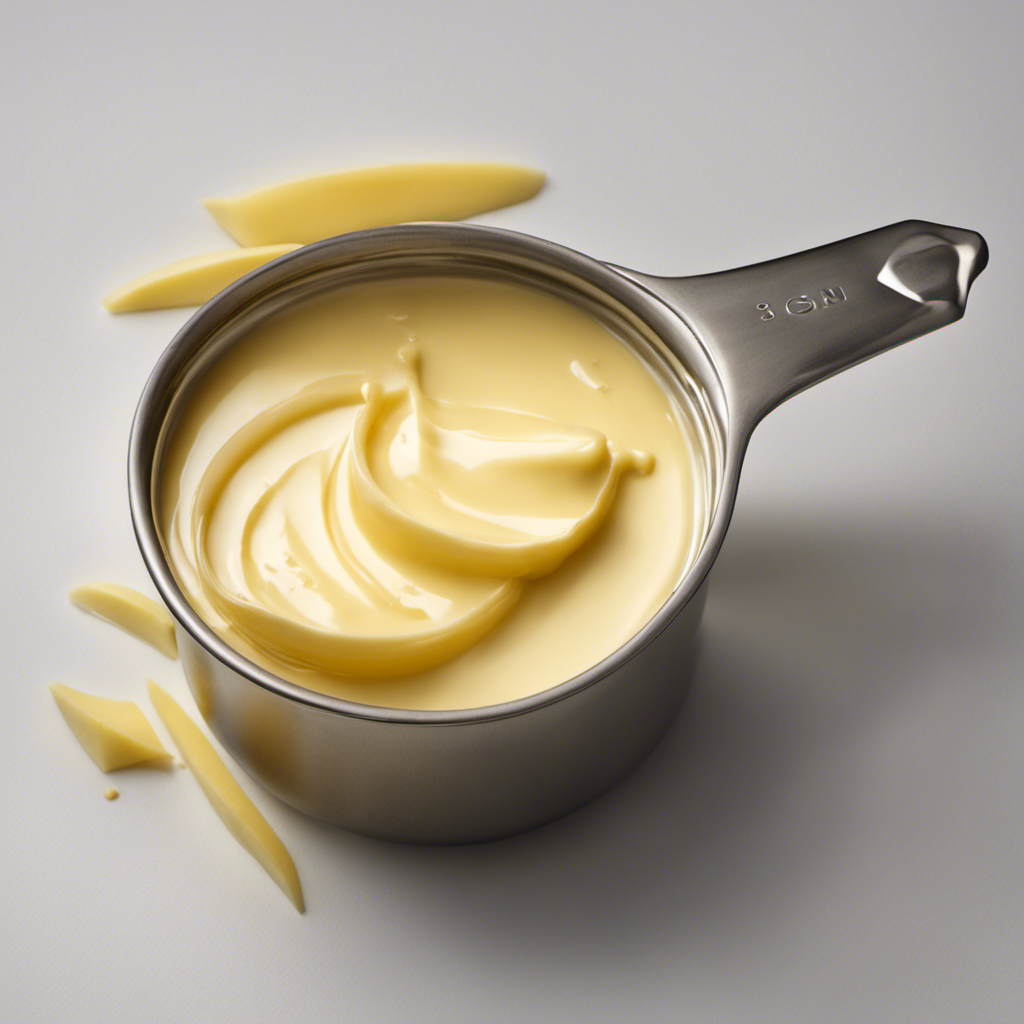
 Butter Tips and Tricks1 month ago
Butter Tips and Tricks1 month agoHow Many Tablespoons in 2/3 Cup of Butter?
-
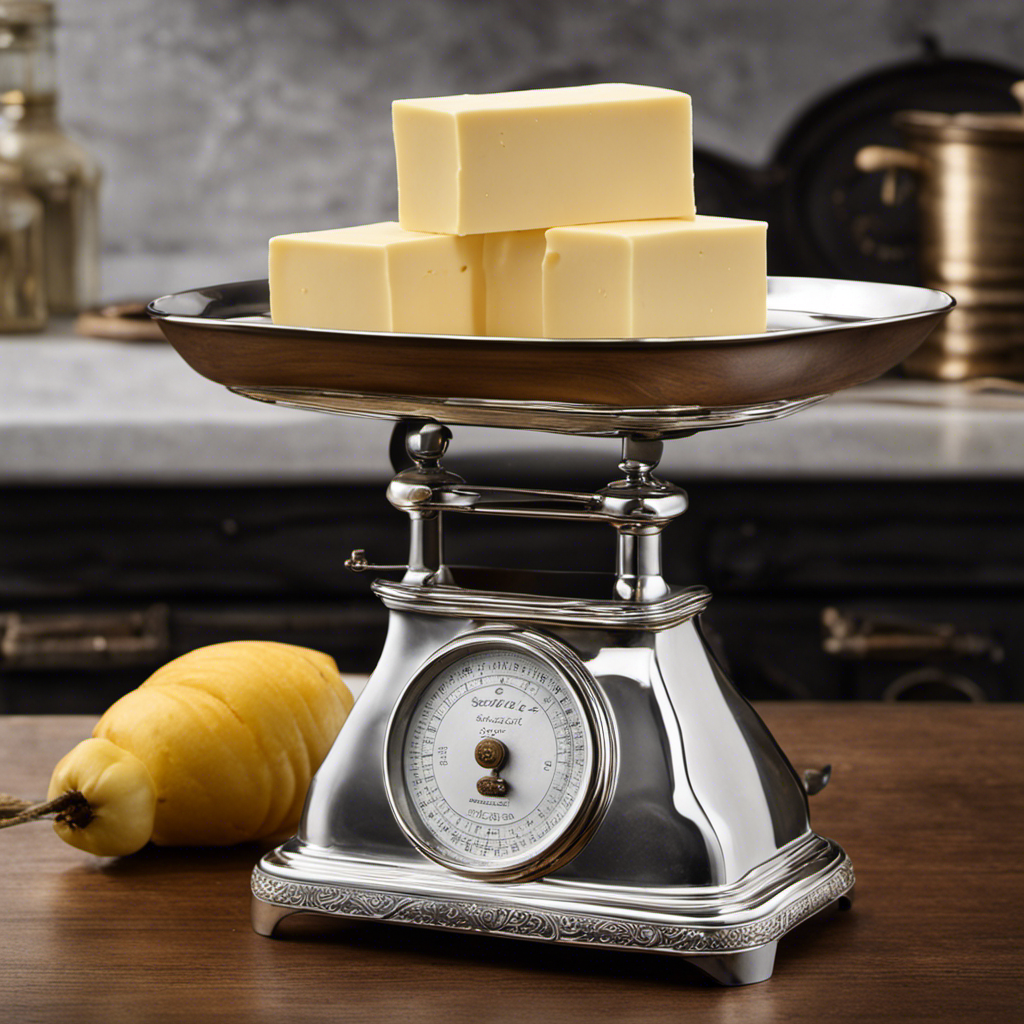
 Butter Tips and Tricks1 month ago
Butter Tips and Tricks1 month agoConverting 3/4 Cup of Butter to Sticks: How Many Sticks?
-
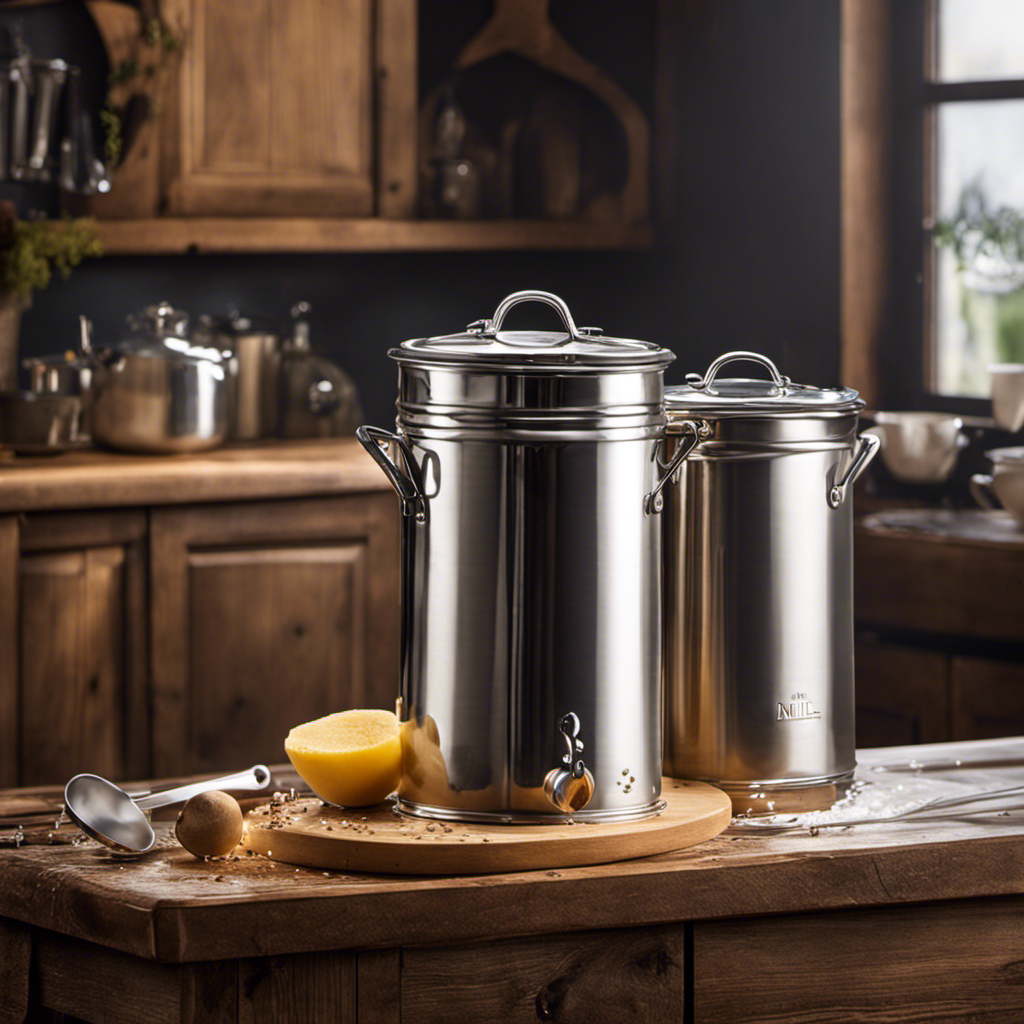
 Recipes & Culinary Uses3 months ago
Recipes & Culinary Uses3 months agoHomemade Butter Making at Home with Fresh Milk
-

 Butter Tips and Tricks4 weeks ago
Butter Tips and Tricks4 weeks agoHow Many Tablespoons of Butter Are in 3/4 Cup?
-

 Recipes & Culinary Uses3 months ago
Recipes & Culinary Uses3 months ago10 Steps to Cook Delicious Dried Butter Beans
-
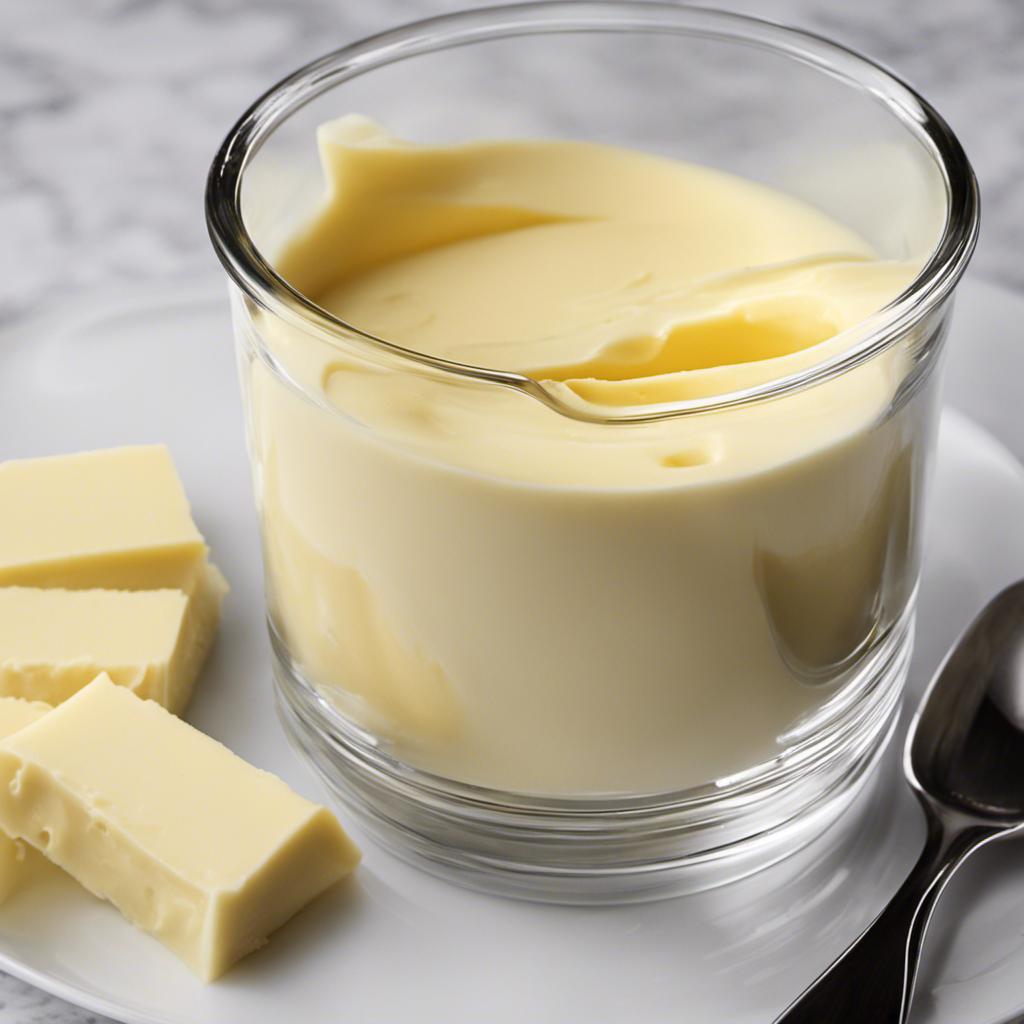
 Recipes & Culinary Uses3 months ago
Recipes & Culinary Uses3 months agoHow Many Tablespoons of Butter in 3/4 Cup: A Simple Guide
-
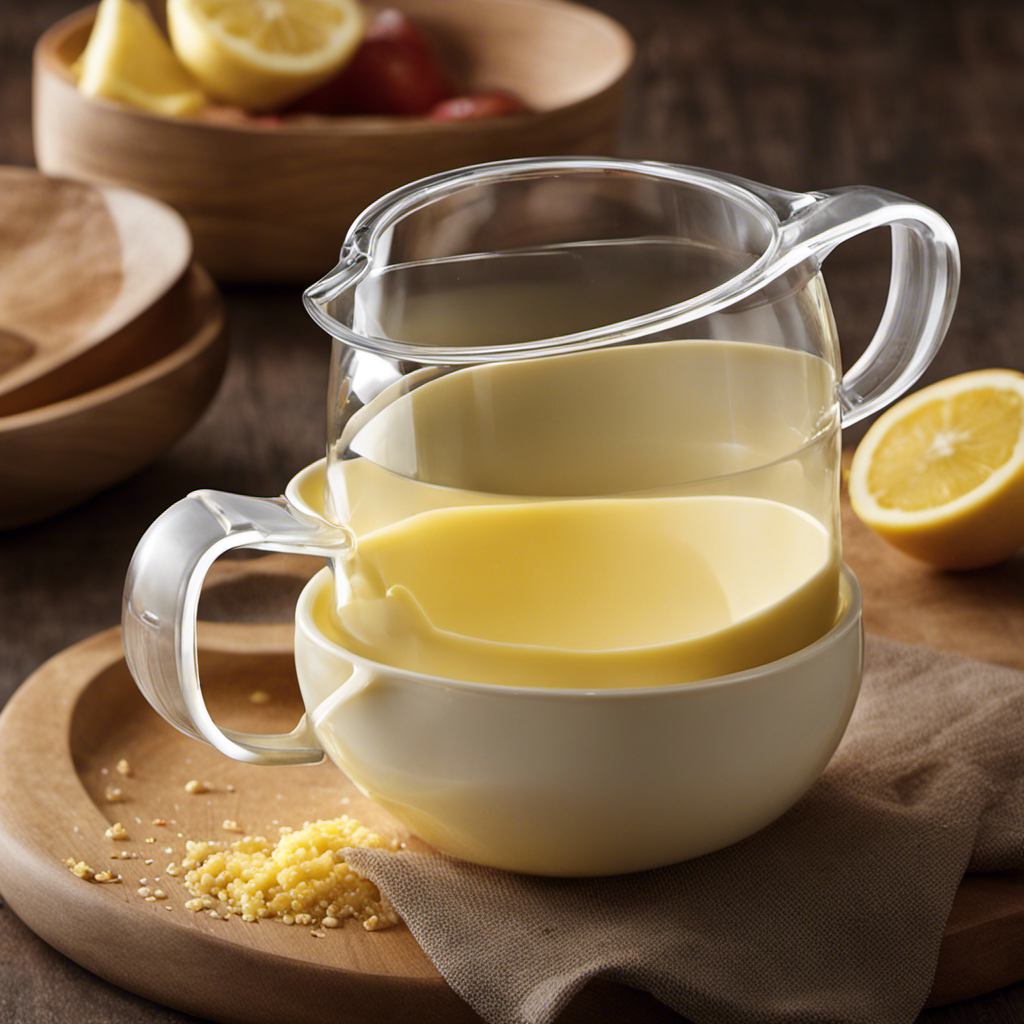
 Butter Tips and Tricks4 weeks ago
Butter Tips and Tricks4 weeks agoHow Many Tablespoons of Butter in 1/3 Cup: A Simple Guide
-
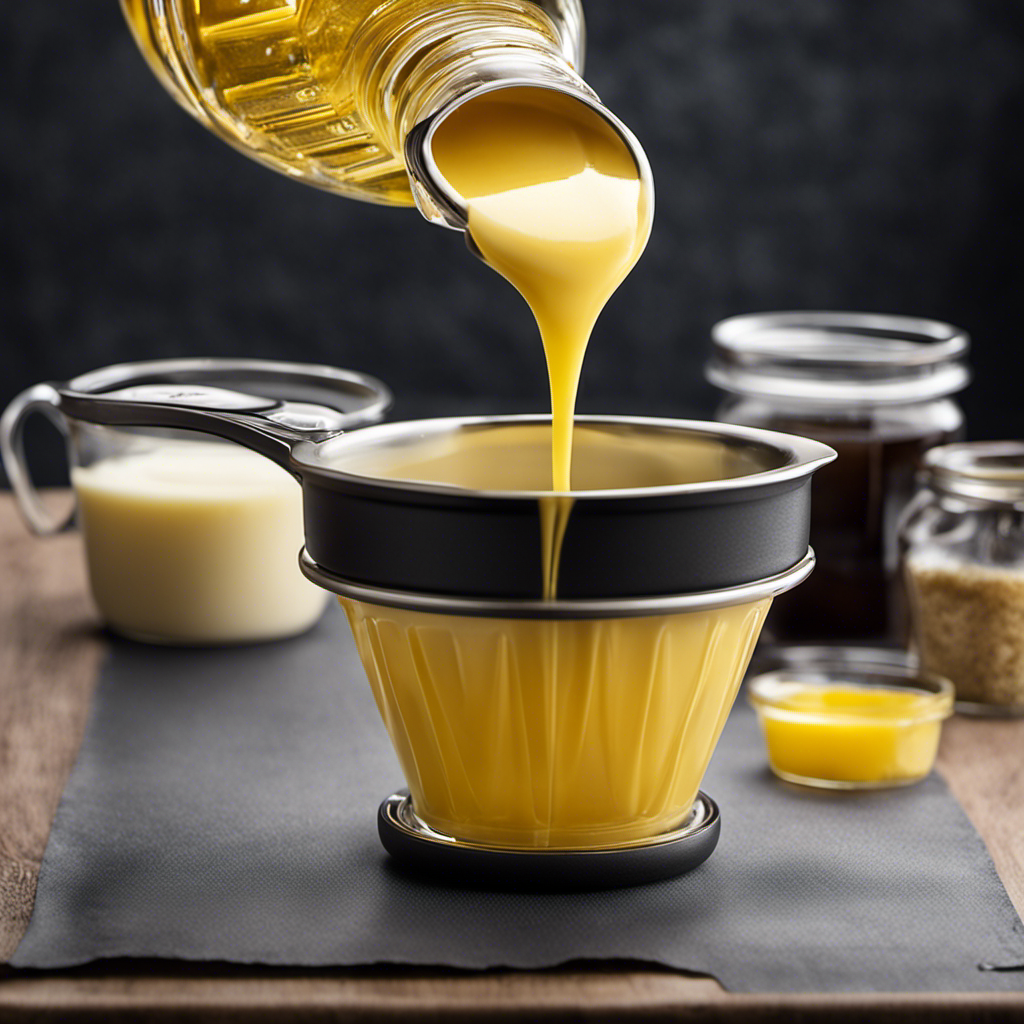
 Butter Tips and Tricks4 weeks ago
Butter Tips and Tricks4 weeks agoHow Many Tablespoons of Butter in 1/4 Cup: A Simple Guide







